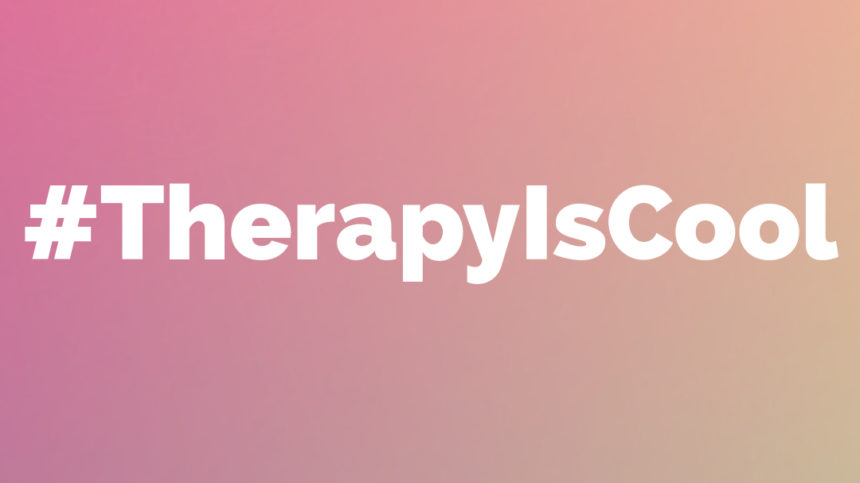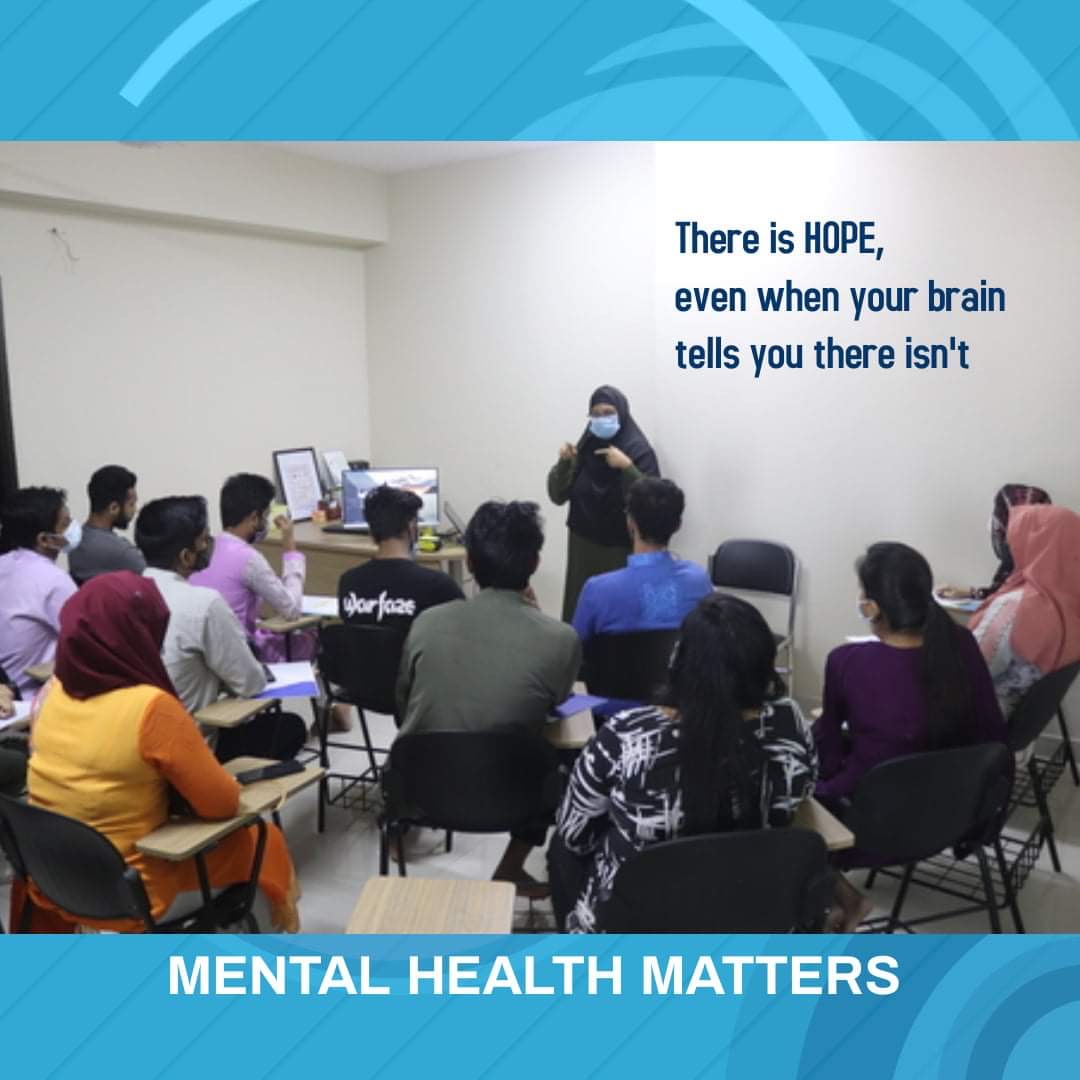
Trigger Warning: This article is intended to help people learn more about therapy and the process of finding a therapist. If you, or someone you know, is having thoughts of self-harm or harming others, please call the National Suicide Prevention Hotline at 1-800-273-8255 or 911. For more resources on mental health, visit Born This Way Foundation at https://bornthisway.foundation/get-help-now/
Seeking help for a mental health challenge (for yourself, or a loved one) can feel like a whole other challenge itself. There are phone calls to make, health insurances to navigate, and a sea of different kinds of therapy to choose from … nevermind making the decision to get help.
It was something I put off for over a year. Something, that in the midst of my own depression, felt too difficult and daunting and tedious to do. I would say, “I’ll call and book an appointment,” and for a while, that was the farthest I got.
That’s why I jumped at the opportunity to talk with Dr. Paige Lembeck, a pediatric psychologist at the Yale Child Study Center and Yale New Haven Hospital, about finding a therapist. We chatted about everything from making that first call to going to that first session. Below I break down the process, to make it simpler to get help when you or a friend need it most.
MAKING THE DECISION TO GET HELP
While most of us can benefit from therapy at some point in our lives, the need will look different for everyone. Mental health conditions such as depression and anxiety are common (and significant) reasons to seek help, but it’s important to keep in mind that you don’t always need a big reason, Dr. Lembeck pointed out.
“Anybody can go. I always recommend that people seek therapy or counseling when their mental state is impacting their functioning, affecting their day-to-day life in some way,” Dr. Lembeck shared.
You could be hurting from a loss, struggling with a transition at work or school, coping with trauma, making a big move, or perhaps unable to define why you’re not feeling yourself at all. Not knowing why you’re feeling a certain way is OK. Working with a mental health provider can help you sort through that.
FINDING A THERAPIST: THE LOGISTICS
“There are two spheres; if you want to break it up, to really consider: the logistical and the fit,” Dr. Lembeck offered. Here are some tips that might help:
Location & Schedule
Sessions are often weekly or biweekly to start, so finding a therapist who is close by — and offers sessions when you’re available, say weeknight evenings, lunch hour, or Saturdays — is helpful. When your schedule gets busy, your therapist’s close proximity and flexible hours will make setting up and attending sessions that much easier.
Payment & Insurance
Therapy is a service, and like most services, it isn’t free. If you have health insurance, it’s useful to know what your insurance will cover.
While many insurance plans don’t require a referral from a primary care provider, some plans may. The cost of co-pays (the fixed out-of-pocket amount you pay for insured services like doctors’ appointments) also varies by plan. If you’re unsure about either, you can look this up on your provider’s website or call customer service with your policy number handy. Most health insurance providers offer online search engines where you can locate in-network providers from the get-go. If you already have a therapist in mind, simply ask if your insurance is accepted when calling as a new patient.
If you don’t have health insurance or are on the look-out for low–cost options, give this free/low-cost clinic search engine, the NAMI HelpLine, or the free and confidential 211 support line a try. Some therapists offer sessions on a sliding cost scale, or may even provide a limited number of pro bono slots. While this is not always the case, be sure to discuss cost concerns and options with potential providers.
You can also keep an eye out for federally-funded clinics, mental health resources you may be offered through your employers’ Employee Assistance Program (EAP), free support groups, and graduate schools or teaching hospitals that offer reduced rates.
Resources & Referrals
Stuck on where or how to look for a therapist? If you’re comfortable, asking friends and family who see a therapist can be a helpful start. Doctors, too.
“Your primary care physician, or other medical providers, can be a great resource for referrals,” Dr. Lembeck advised. “You can turn to places like schools, universities, companies, and hospitals. They often have mental health providers or, at a minimum, resources to help support you.”
Online search engines can also help locate a mental health provider in your area. In addition to the low-cost options and in-network search resources above, here are trustworthy resources to start with:
- Substance Abuse and Mental Health Service Administration
- American Psychological Association
- National Institute of Mental Health
- American Academy of Child & Adolescent Psychiatry
FINDING A THERAPIST: THE FIT
As far as fit goes, Dr. Lembeck emphasized that the relationship between therapist and patient is such a critical piece of the puzzle — and often the biggest influence on your experience.
“Sometimes, it can be trial and error,” she explained, “You want someone you can sit with and feel comfortable. But that said, some level of discomfort is often part of the process and that is okay.”
Culture and identity can be factors to consider. If you feel you aren’t being heard, respected, or understood — or simply aren’t clicking after a few sessions — it’s OK to share this directly with your therapist and seek help elsewhere.
Types of Therapy
Perhaps you’ve googled “types of therapy” and been overwhelmed by the response. There are more than a few kinds of talking therapies available: art therapy, cognitive behavioral therapy (CBT), psychotherapy, relationship counseling, family therapy, and more. But don’t let that deter you.
It’s more important to take the first step and seek help than it is to know what therapy is best. In fact, “It’s really an ongoing debate within the psychology world,” Dr. Lembeck explained. “What I, and I know many of my peers would recommend, is looking for an evidence-based practice (therapy backed by scientific evidence).”
While there are a variety of different providers to choose from — the term “therapist” can include psychologists, counselors, and social workers— the most important thing is to seek out a licensed/credentialed mental health provider. You can certainly ask questions about how a provider’s skills and experience align with your needs. Most mental health providers will ask you screening questions for this purpose and can help you find the most appropriate form of therapy from there.
KNOWING WHAT TO EXPECT: MYTH VERSUS REALITY
Therapy, Defined
What makes therapy therapy?
It’s a safe space. It’s a confidential space where you can talk and get support from someone who is removed from your other support circles (i.e., family and friends).
“A therapist is like a more objective sounding board for you to problem-solve,” Dr. Lembeck shared. It’s very much about “unconditional positive regard, which is an important factor that allows a therapeutic alliance to develop, and helps create a safe space for sharing both the bad and the good.”
It’s a two-way street. “I want to emphasize the collaborative nature of this process. It really is a team effort (between patient and counselor),” Dr. Lembeck shared. “I think many people are concerned that it is directive and advice-giving when really it is a collaborative, dynamic process that values patient feedback in an unbiased environment (‘judgment free zone’).”
Contrary to popular myth, therapists are not necessarily there to provide direct advice.
“A good therapist will guide you, providing direction and strategies you can use to work through to answers,” Dr. Lembeck said.
It starts (and ends) with a goal. The goal of all therapy is to better how you’re functioning or to feel better, in your everyday life. Each person will start with goals specific to them. If you’re unsure of what you’re struggling with, a good therapist will work with you to identify the challenges at hand, what you hope to achieve, and when you’ve reached your goals.
It goes beyond the session. While pop culture may have you thinking it’s all about the 45-minute or hour-long session, what you do with that session afterward matters just as much.
“The work really happens outside of those weekly sessions, where you’re translating what you’re learning and talking about into daily practice,” Dr. Lembeck said, adding that “you’ll often have light assignments” to complete outside of sessions.
What Sessions Look Like
The first meeting is really a get-to-know-you session for both the therapist and the patient. “It’s an opportunity to explain what brings you there, discuss payment, confidentiality, and ask questions of your therapist,” Dr. Lembeck explained. “The counselor will do what we typically call an ‘intake.’”
This involves questions about your history, any big life events, what you’re struggling with, and what you’re hoping to get out of therapy. Intakes are intended to help you and your therapist assess where you’re starting and where to go from there.
But fear not. Dr. Lembeck shared that, “It’s common that people aren’t sure what they’re hoping to improve, or what they’re challenges or goals are exactly. If that’s the case, there’s more exploration of what you’re hoping to get out of the process and defining of goals.”
“It’s really a collaborative process. And another thing to note is that ‘you set the pace as a patient. You don’t have to share, or talk about something until you’re ready to — that’s something you control,” Dr. Lembeck emphasized.
Going forward, sessions often include talking, conversation, reflection, and learning. For example, you might be learning “breathing exercises, ways to relax your body, strategies for coping, and frameworks for problem-solving,” Dr. Lembeck explained. Your therapist may share online resources, excerpts from a novel or audiobook, a piece of art, guided worksheets, or a tool to help you work through challenges. Whatever various forms your sessions take will depend on your needs and learning style, and the type of therapy, but the goal remains the same: to provide a safe, supportive space and a toolbox you can reach into when life gets rough and tumble.
Medication
When I asked Dr. Lembeck if there was anything else she wanted to discuss, she was thoughtful in her response.
“There are circumstances where medication might be helpful and can supplement treatment if symptoms are more severe. Even temporarily, it can serve as a crutch to make therapy more effective,” Dr. Lembeck offered, clarifying that it depends very much on circumstance, health, and personal choice.
When medication is appropriate — in cases where you are not seeing a provider who can prescribe directly — most providers will collaborate closely with a psychiatrist, APRN, or doctor who can.
“People sometimes have strong feelings about taking, or not taking, medication,” Dr. Lembeck added.
And that is OK. Like getting help for a mental health challenge, it is always something you can discuss with a mental health care provider.
FACING & REDUCING STIGMA
Stigma surrounding mental illness, and structural barriers like access to transportation, can sometimes make getting to therapy that much more challenging.
If stigma is something you face, or fear from your community, family, or friends, know that you are not alone.
“You always have the choice to decide with whom you share,” Dr. Lembeck said, adding, “It’s OK, and common, to say to someone ‘I’m going to the doctors’ or ‘I have to run to an errand.’ Ultimately you can use your wisdom to choose whom to tell about your mental health challenges or therapy itself.”
Talking about therapy, though, is one way to help reduce the stigma surrounding mental illness. When asked how we can all play a role in doing so, Dr. Lembeck didn’t hesitate: “The number one thing you can do is to be vocal about it. If you’re going with therapy, share it with people.”
Word-of-mouth has long been one of the most coveted and authentic forms of marketing there is. Talking about therapy (to those you’re comfortable with) can help others “realize that it doesn’t have to be a big deal or something to be ashamed of,” Dr. Lembeck added.
“Over the past decade, I think our society, and the world, is moving towards greater awareness and acceptance of mental health. In the future, I think — and surely hope — that the stigma surrounding mental health is further reduced,” Dr. Lembeck said.
I think that’s something we can all get behind.

Dr. Paige Lembeck is a pediatric psychologist at the Yale Child Study Center, where she specializes in working with youth with chronic and acute medical conditions. She spends a portion of her time working in the Child Study Center’s Outpatient Psychiatric Clinic. Dr. Lembeck spends the rest of her time working in Yale-New Haven Hospital’s pediatric neurology clinics with a focus on headaches and muscular dystrophy. In addition, Dr. Lembeck’s work includes supervision and psychological assessment.




















